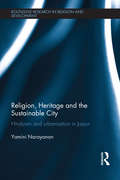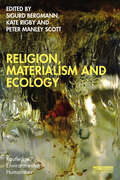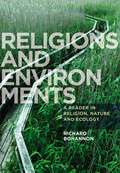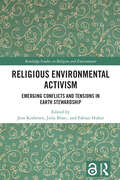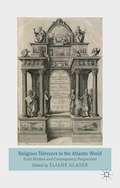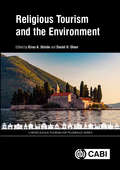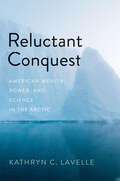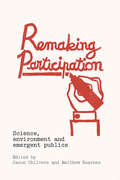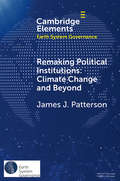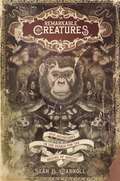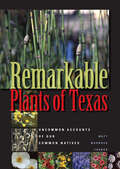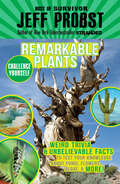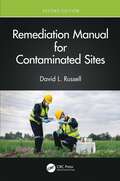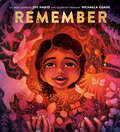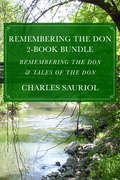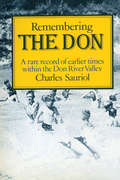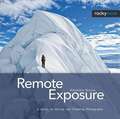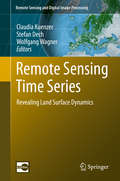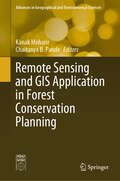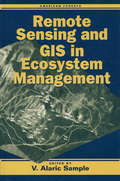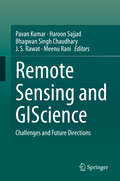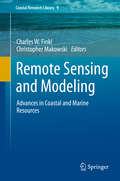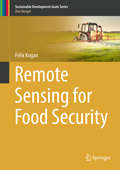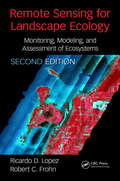- Table View
- List View
Religion, Heritage and the Sustainable City: Hinduism and urbanisation in Jaipur (Routledge Research in Religion and Development)
by Yamini NarayananThe speed and scale of urbanisation in India is unprecedented almost anywhere in the world and has tremendous global implications. The religious influence on the urban experience has resonances for all aspects of urban sustainability in India and yet it remains a blind spot while articulating sustainable urban policy. This book explores the historical and on-going influence of religion on urban planning, design, space utilisation, urban identities and communities. It argues that the conceptual and empirical approaches to planning sustainable cities in India need to be developed out of analytical concepts that define local sense of place and identity. Examining how Hindu religious heritage, beliefs and religiously influenced planning practices have impacted on sustainable urbanisation development in Jaipur and Indian cities in general, the book identifies the challenges and opportunities that ritualistic and belief resources pose for sustainability. It focuses on three key aspects: spatial segregation and ghettoisation; gender-inclusive urban development; and the nexus between religion, nature and urban development. This cutting-edge book is one of the first case studies linking Hindu religion, heritage, urban development, women and the environment in a way that responds to the realities of Indian cities. It opens up discussion on the nexus of religion and development, drawing out insightful policy implications for the sustainable urban planning of many cities in India and elsewhere in South Asia and the developing world.
Religion, Materialism and Ecology (Routledge Environmental Humanities)
by Sigurd Bergmann, Kate Rigby and Peter Manley ScottThis timely collection of essays by leading international scholars across religious studies and the environmental humanities advances a lively discussion on materialism in its many forms. While there is little agreement on what ‘materialism’ means, it is evident that there is a resurgence in thinking about matter in more animated and active ways. The volume explores how debates concerning the new materialisms impinge on religious traditions and the extent to which religions, with their material culture and beliefs in the Divine within the material, can make a creative contribution to debates about ecological materialisms. Spanning a broad range of themes, including politics, architecture, hermeneutics, literature and religion, the book brings together a series of discussions on materialism in the context of diverse methodologies and approaches. The volume investigates a range of issues including space and place, hierarchy and relationality, the relationship between nature and society, human and other agencies, and worldviews and cultural values. Drawing on literary and critical theory, and queer, philosophical, theological and social theoretical approaches, this ground-breaking book will make an important contribution to the environmental humanities. It will be a key read for postgraduate students, researchers and scholars in religious studies, cultural anthropology, literary studies, philosophy and environmental studies.
Religions and Environments: A Reader in Religion, Nature and Ecology
by Richard BohannonRecent decades have witnessed a surge of literature and activism from religious leaders and thinkers on the natural environment. This volume brings together some of the most thought-provoking examples of such writings from the nineteenth century up to today, spanning a variety of methodological approaches and religious traditions, viewpoints, and locations. Within three parts--the wilderness, the garden, and the city--are essays representing nature spiritualities, Asian traditions, Judaism, Islam, Christianity, and indigenous traditions. Each part contains a critical introduction by the editor which provides an overview of issues and guides students to key ideas. Ideal resource for courses on religion and the environment, religion and ecology, and religion and nature.
Religious Environmental Activism: Emerging Conflicts and Tensions in Earth Stewardship (Routledge Studies in Religion and Environment)
by Jens Koehrsen Julia Blanc Fabian HuberThis volume explores how religious and spiritual actors engage for environmental protection and fight against climate change. Climate change and sustainability are increasingly prominent topics among religious and spiritual groups. Different faith traditions have developed "green" theologies, launched environmental protection projects and issued public statements on climate change. Against this background, academic scholarship has raised optimistic claims about the strong potentials of religions to address environmental challenges. Taking a critical stance with regard to these claims, the chapters in this volume show that religious environmentalism is an embattled terrain. Tensions are an inherent part of religious environmentalism. These do not necessarily manifest themselves in open clashes between different parties but in different actions, views, theologies, ambivalences, misunderstandings, and sometimes mistrust. Keeping below the surface, these tensions can create effective barriers for religious environmentalism. The chapters examine how tensions are manifested and dealt with through a range of empirical case studies in various world regions. Covering different religious and spiritual traditions, they reflect on intradenominational, interdenominational, interreligious, and religious-societal tensions. Thereby, this volume sheds new light on the problems that religions face when they seek to take an active role in today’s societal challenges.
Religious Tolerance in the Atlantic World
by Eliane GlaserPlacing topical debates in historical perspective, the essays by leading scholars of history, literature and political science explore issues of difference and diversity, inclusion and exclusion, and faith in relation to a variety of Christian groups, Jews and Muslims in the context of both early modern and contemporary England and America.
Religious Tourism and the Environment (CABI Religious Tourism and Pilgrimage Series)
by Kiran A. Shinde and Daniel H. OlsenThe remarkable growth in religious tourism across the world has generated considerable interest in the impacts of this type of tourism. Focusing here on environmental issues, this book moves beyond the documentation of environmental impacts to examine in greater depth the intersections between religious tourism and the environment. Beginning with an in-depth introduction that highlights the intersections between religion, tourism, and the environment, the book then focuses on the environment as a resource or generator for religious tourism and as a recipient of the impacts of religious tourism. Chapters included discuss such important areas as theological views, environmental responsibility, and host perspectives. Covering as many cultural and environmental regions as possible, this book provides: -An in-depth yet holistic view of the relationships between religious tourism and the environment; -A conceptual framework that goes beyond listing potential environment impacts; -A strong focus on explaining the universality of the deeper environmental issues surrounding sacredness and sacred places; -A discussion of the role of disease and health-related issues at mass religious gatherings. From a global writing team and featuring case studies spanning Europe and Asia, this book will be of great interest to researchers and students of tourism and religious studies, as well as those studying environmental issues.
Reluctant Conquest: American Wealth, Power, and Science in the Arctic
by Kathryn C. LavelleA comprehensive history of U.S. involvement in the Arctic, from the American Revolution through the acquisition of Alaska to the present day What drives American foreign relations in the Arctic? It is difficult to give a unified answer to this question because most histories of the region are divided between the Atlantic and Pacific coasts, Asian and European strategic interests, or federal government and Indigenous peoples&’ concerns, making it difficult to understand the connections among the environmental challenges, scientific understandings, strategic calculations, and governance relationships. Most Americans do not think of their country as an Arctic power, yet it is a region where the United States has had important ties throughout its history. In this sweeping study, from the founding of the country through the acquisition of Alaska to the present, Kathryn C. Lavelle considers American relations across the circumpolar North, incorporating discussions of economics, national security, and science that are conventionally separated. Lavelle argues that it is impossible to understand U.S. policy without a knowledge of American political development and of how scientific understandings have grown alongside studies of climate and other environmental issues. This history has important implications for future American policy regarding traditional national security and political economy, in addition to climate change and environmental cooperation.
Remaking Participation: Science, Environment and Emergent Publics
by Matthew Kearnes Jason ChilversChanging relations between science and democracy – and controversies over issues such as climate change, energy transitions, genetically modified organisms and smart technologies – have led to a rapid rise in new forms of public participation and citizen engagement. While most existing approaches adopt fixed meanings of ‘participation’ and are consumed by questions of method or critiquing the possible limits of democratic engagement, this book offers new insights that rethink public engagements with science, innovation and environmental issues as diverse, emergent and in the making. Bringing together leading scholars on science and democracy, working between science and technology studies, political theory, geography, sociology and anthropology, the volume develops relational and co-productionist approaches to studying and intervening in spaces of participation. New empirical insights into the making, construction, circulation and effects of participation across cultures are illustrated through examples ranging from climate change and energy to nanotechnology and mundane technologies, from institutionalised deliberative processes to citizen-led innovation and activism, and from the global north to global south. This new way of seeing participation in science and democracy opens up alternative paths for reconfiguring and remaking participation in more experimental, reflexive, anticipatory and responsible ways. This ground-breaking book is essential reading for scholars and students of participation across the critical social sciences and beyond, as well as those seeking to build more transformative participatory practices.
Remaking Political Institutions: Climate Change and Beyond (Elements in Earth System Governance)
by James J. PattersonInstitutions are failing in many areas of contemporary politics, not least of which concerns climate change. However, remedying such problems is not straightforward. Pursuing institutional improvement is an intensely political process, playing out over extended timeframes, and intricately tied to existing setups. Such activities are open-ended, and outcomes are often provisional and indeterminate. The question of institutional improvement, therefore, centers on understanding how institutions are (re)made within complex settings. This Element develops an original analytical foundation for studying institutional remaking and its political dynamics. It explains how institutional remaking can be observed and provides a typology comprising five areas of institutional production involved in institutional remaking (Novelty, Uptake, Dismantling, Stability, Interplay). This opens up a new research agenda on the politics of responding to institutional breakdown, and brings sustainability scholarship into closer dialogue with scholarship on processes of institutional change and development. Also available as Open Access on Cambridge Core.
Remarkable Creatures: Epic Adventures in the Search for the Origins of Species, 1st Edition
by Sean B. CarrollThis book takes us on the dramatic expeditions that unearthed the history of life on our planet. Sean Carroll leads a rousing voyage that recounts the most important discoveries in two centuries of natural history.
Remarkable Plants That Shape Our World
by William Bynum Helen BynumImagine a typical morning—munching on a bowl of cereal, sipping coffee, dressing for the day, riding to work. Every moment of this common routine draws on the power of plants, and the centuries of development that brought wheat, coffee beans, cotton, and rubber—among many others—into our daily lives. <p><p>Remarkable Plants celebrates the wonder and utility of the green kingdom, taking a detailed look at how plants have shaped our world. It focuses on eighty key species and richly explores their history, highlighting their importance and bringing to light surprising stories. Organized thematically into eight sections, the book starts with “Transformers” (including rice, beans, olives) and moves through sections such as “Heal and Harm” (poppy, aloe, strychnos) and “Revered and Adored” (lotus, frankincense, rose). Each species is introduced with its common and scientific names and followed by an exploration of its cultural, historical, botanical, and symbolic associations.
Remarkable Plants of Texas: Uncommon Accounts of Our Common Natives (Corrie Herring Hooks Series)
by Matt Warnock Turner&“No single existing publication includes the kind of information featured in this book,&” a natural history of the flora of the Lone Star State (A. Michael Powell, Professor of Biology Emeritus and Director of the Herbarium, Sul Ross State University). With some 6,000 species of plants, Texas has extraordinary botanical wealth and diversity. Learning to identify plants is the first step in understanding their vital role in nature, and many field guides have been published for that purpose. But to fully appreciate how Texas&’s native plants have sustained people and animals from prehistoric times to the present, you need Remarkable Plants of Texas. In this intriguing book, Matt Warnock Turner explores the little-known facts—be they archaeological, historical, material, medicinal, culinary, or cultural—behind our familiar botanical landscape. In sixty-five entries that cover over eighty of our most common native plants from trees, shrubs, and wildflowers to grasses, cacti, vines, and aquatics, he traces our vast array of connections with plants. Turner looks at how people have used plants for food, shelter, medicine, and economic subsistence; how plants have figured in the historical record and in Texas folklore; how plants nourish wildlife; and how some plants have unusual ecological or biological characteristics. Illustrated with over one hundred color photos and organized for easy reference, Remarkable Plants of Texas can function as a guide to individual species as well as an enjoyable natural history of our most fascinating native plants.
Remarkable Plants: Weird Trivia & Unbelievable Facts to Test Your Knowledge About Fungi, Flowers, (Challenge Yourself #3)
by Jeff ProbstDiscover the world's most remarkable plants with Emmy Award winning host of Survivor and New York Times bestselling author Jeff Probst! New from Emmy-Award winning host of Survivor and New York Times bestselling author of Stranded, Jeff Probst comes a dynamic and graphic line of trivia books! Packed with full-color photos, fascinating facts and trivia, and great callouts from Jeff, this series is perfect for every kid looking to know the coolest, weirdest facts and trivia around! Challenge yourself to discover the world&’s most remarkable plants! From the biggest trees to the deadliest fungus and everything in between, find out all the fascinating facts about the plants that surround us with the Emmy Award winning host of Survivor and New York Times bestselling author, Jeff Probst! Features quizzes, trivia, facts, and incredible stories that will shock and amaze!
Remediation Manual for Contaminated Sites
by David L. RussellBased on the author’s more than 40 years of experience working on environmental projects, Remediation Manual for Contaminated Sites provides a practical guide to environmental remediation and cleanups. It presents a broad overview of the environmental remediation process, distilled into what one needs to know to evaluate a specific challenge or solve a remediation problem. The text offers guidance on tasks that range from managing consultants and contractors to gathering data, selecting a suitable remediation technology, and calculating remediation costs. This new edition is updated throughout, includes five new chapters, and provides a more global coverage.• This book includes remediation strategies for a variety of contaminants and examines a wide range of technologies for the remediation of water and soil, including excavation, wells, drainage, soil venting, vapor stripping, incineration, bioremediation, containment, solidification, vitrification, and phytoremediation.• Written as a down‑to‑earth reference for professionals faced with the challenges of remediating a contaminated site, this book is also useful as a primer for students and those new to the field. It includes numerous figures, photographs, tables, and helpful checklists.• This new edition adds five all‑new chapters. It presents a more global approach and practical examples from around the world.
Remember
by Joy HarjoUS Poet Laureate Joy Harjo’s iconic poem "Remember," illustrated by Caldecott Medalist Michaela Goade, invites young readers to pause and reflect on the wonder of the world around them, and to remember the importance of their place in it.** <P><P> Remember the sky you were born under,<br> Know each of the star's stories.<br> Remember the moon, know who she is.<br> Remember the sun's birth at dawn,<br> That is the strongest point of time. <P><P> So begins the picture book adaptation of the renowned poem that encourages young readers to reflect on family, nature, and their heritage. In simple and direct language, Harjo, a member of the Mvskoke Nation, urges readers to pay close attention to who they are, the world they were born into, and how all inhabitants on earth are connected. Michaela Goade, drawing from her Tlingit culture, has created vivid illustrations that make the words come alive in an engaging and accessible way. <P><P> This timeless poem paired with magnificent paintings makes for a picture book that is a true celebration of life and our human role within it.
Remembering the Don 2-Book Bundle: Remembering the Don / Tales of the Don
by Charles SauriolMore than just a Parkway, the Don Valley is a vital natural habitat in Toronto's city core. Naturalist Charles Sauriol was a key player in its preservation. Here Sauriol shares a history of the Don Valley, from earlier times when the Mississauga First Nation encamped along the river teaming with salmon to cottaging to the naturalists who worked to save the Don Valley. This two-book bundle includes: Remembering the Don: A Rare Record of Earlier Times Within the Don River Valley A tribute to the earlier days of the Don River Valley: Mississauga First Nation camped along a Don River teeming with salmon, red-coated militia regiments, and courageous pioneers. Tales of the Don From Scout outings in 1920 to pioneer cottaging, the author's long association with the Don makes for fascinating reading in this sequel to Remembering the Don.
Remembering the Don: A Rare Record of Earlier Times Within the Don River Valley
by Charles SauriolRemembering the Don is a tribute to the things "that used to be." Of Mississauga Indians encamped along a sprawling river teeming with salmon, red-coated Militia regiments, and courageous pioneer men and women from widely differing backgrounds. <P><P>In later times the Don Valley and the river Don were to attract a host of outstanding naturalists, authors and artists. Through their combined talents and energy, word and evidence of the history and beauty of the Don Valley spread far beyond its physical environs. <P><P>With the publication of Remembering the Don, Charles Sauriol assumes his rightful role as one of the Don Valley's greatest champions.
Remote Exposure: A Guide to Hiking and Climbing Photography
by Alexandre BuisseThough many hikers and climbers carry cameras with them, they often come away feeling disappointed because their images fail to visually translate their experiences. In Remote Exposure Alexandre Buisse goes beyond the mere basics of photography and gives you the tools needed to create images that are not only of good technical quality but that are compelling as well. This book will guide you through the various options for equipment, since the requirement for lightweight gear that is able to withstand cold, adverse weather conditions presents unique challenges. Learn about the importance of having an efficient carrying system and a logical, planned workflow. Throughout the book you will find advice on where to point your camera and how to compose a strong image. Included are specific requirements for rock climbing, hiking, mountaineering, and camping. More advanced photographic topics are also covered such as digital capture and optimization techniques like high dynamic range imaging (HDRI), panoramic stitching, and how to achieve excellent results without a tripod. The pages are filled with over 100 stunning images captured by Buisse as he hiked and climbed through mountain ranges on three continents. Photographers of all levels and those who just appreciate beautiful images are sure to be inspired by this book. Foreword by Cory Richards (member of the historic climbing expedition that reached the summit of Gasherbrum II in winter).
Remote Sensing Time Series
by Wolfgang Wagner Claudia Kuenzer Stefan DechThis volume comprises an outstanding variety of chapters on Earth Observation based time series analyses, undertaken to reveal past and current land surface dynamics for large areas. What exactly are time series of Earth Observation data? Which sensors are available to generate real time series? How can they be processed to reveal their valuable hidden information? Which challenges are encountered on the way and which pre-processing is needed? And last but not least: which processes can be observed? How are large regions of our planet changing over time and which dynamics and trends are visible? These and many other questions are answered within this book "Remote Sensing Time Series Analyses - Revealing Land Surface Dynamics". Internationally renowned experts from Europe, the USA and China present their exciting findings based on the exploitation of satellite data archives from well-known sensors such as AVHRR, MODIS, Landsat, ENVISAT, ERS and METOP amongst others. Selected review and methods chapters provide a good overview over time series processing and the recent advances in the optical and radar domain. A fine selection of application chapters addresses multi-class land cover and land use change at national to continental scale, the derivation of patterns of vegetation phenology, biomass assessments, investigations on snow cover duration and recent dynamics, as well as urban sprawl observed over time.
Remote Sensing and GIS Application in Forest Conservation Planning (Advances in Geographical and Environmental Sciences)
by Chaitanya B. Pande Kanak MoharirThis book focuses on the challenges in conservation, management and protection of forests in India as well as other countries, using recently developed technologies. Various topics are discussed including remote sensing, GIS, land use land cover, forest conservation techniques, social economics effects, fire forecasting models and the effect of fire on natural resources, among others. The book provides multi-disciplinary overviews for academicians, administrators, policymakers and professionals involved in the diverse aspects of sustainable forest development, planning and management, and forecasting and extinguishing forest fires. The book helps readers better understand the development of forests by planning and management in India and other countries, with the following focuses: - Forest area conservation in India and other countries - Advanced techniques for planning and conservation of forest cover - Forest conservation modeling using remote sensing and GIS techniques - Forest fire forecasting models used in remote sensing and GIS environments
Remote Sensing and GIS in Ecosystem Management
by Al SampleRecent advances in remote-sensing technology and the processing of remote-sensing data through geographic information systems (GIS) present ecologists and resource managers with a tremendously valuable tool -- but only if they are able to understand its capabilities and capture its potential.Remote Sensing and GIS in Ecosystem Management identifies and articulates current and emerging information needs of those involved with the management of forest ecosystems. It explores the potential of remote-sensing/GIS technologies to address those needs, examining: the need for landscape-scale analysis to support forest ecosystem research and management current challenges in the development of remote-sensing/GIS applications case studies of different forest regions in the United States the potential for further development or declassification of military and aerospace remote-sensing/GIS technologies As well as providing important information for ecologists and resource managers, the book will serve as a valuable resource for legislative and judicial policymakers who do not have a technical background in either remote sensing or resource management but who are nonetheless called upon to make decisions regarding the protection and management of forest ecosystems.
Remote Sensing and GIScience: Challenges and Future Directions
by Pavan Kumar Meenu Rani Haroon Sajjad Bhagwan Singh Chaudhary J. S. RawatThis book covers several themes related to forestry, agriculture, water, soil, urban, and atmospheric research. GIScience technology systems have increased in significance in recent decades and have the ability to acquire information at ground level with a higher spectral resolution using a field radio-spectrometer, which is a great improvement compared to other remote sensing systems. GIScience technology systems are widely used for solving and understanding the concept of forestry, crop, water resources, and related research themes. This book aims to advance the scientific understanding of GIScience technology and applications. The chapters present GIScience data integration with other sources such as LiDAR, Multi-spectral data and their applications in forestry, crop assessment, soil assessment, mineral mapping and related themes. The book will be of interest to geospatial experts, modellers, foresters, agricultural scientists, hyperspectral remote sensing and space community, ecologists and conservation communities, environmental consultants, big data compilers, and computing experts.
Remote Sensing and Modeling
by Charles W. Finkl Christopher MakowskiThis book is geared for advanced level research in the general subject area of remote sensing and modeling as they apply to the coastal marine environment. The various chapters focus on the latest scientific and technical advances in the service of better understanding coastal marine environments for their care, conservation and management. Chapters specifically deal with advances in remote sensing coastal classifications, environmental monitoring, digital ocean technological advances, geophysical methods, geoacoustics, X-band radar, risk assessment models, GIS applications, real-time modeling systems, and spatial modeling. Readers will find this book useful because it summarizes applications of new research methods in one of the world's most dynamic and complicated environments. Chapters in this book will be of interest to specialists in the coastal marine environment who deals with aspects of environmental monitoring and assessment via remote sensing techniques and numerical modeling.
Remote Sensing for Food Security (Sustainable Development Goals Series)
by Felix KoganThis volume gathers a variety of applications for remote sensing of vegetation health (VH) and concretely shows how this information can be used in service of ending hunger and of ensuring future food security. In this book’s ten chapters, Dr. Felix Kogan, one of the most prolific scientists in this sphere, shows how a new VH method, designed from operational environmental satellite data, can be used to provide advanced predictions of agricultural losses, helping to enhance food security and reducing the number of hungry people. Topics covered include the scientific basis of the VH method, drought monitoring, prediction of short-term agricultural yield and crop insurance, and impacts of long term climate variability and change on food security. A short discussion on VH for human health-related topics such as detection and prediction of malaria and fire risk is included as well.
Remote Sensing for Landscape Ecology: Monitoring, Modeling, And Assessment Of Ecosystems
by Ricardo D Lopez Robert C FrohnThis book provides the practical basis for the use of remote sensing to accomplish landscape ecological projects, through the merging of theory and practice, with examples. This is a specialized application and both these topics have evolved rapidly in the past decade. This evolution is not in the previous edition, and indeed this update provides much new information and valuable ideas for the professional and assist in directing the training of new personnel. The new edition will feature a combination of landscape ecology metrics, quantitative field measurements, and geospatial analyses.
